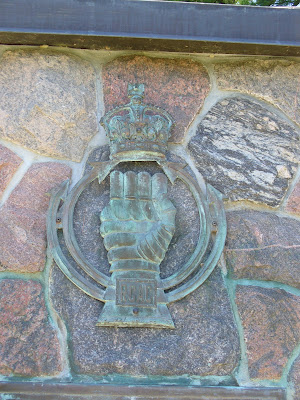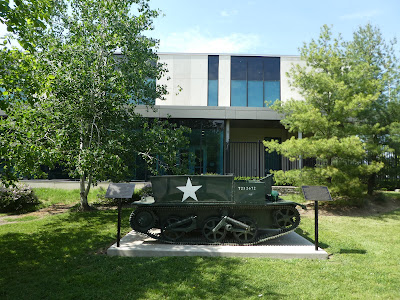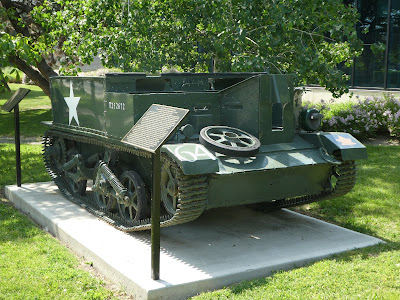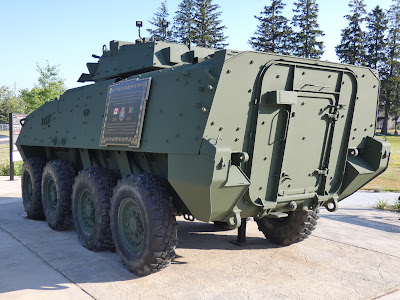Location: Durham Region N 44.10888 W -79.12300
On the northwest corner of Brock Street and Toronto Street, beside the CIBC Bank.
This memorial is dedicated to the tragic story of Lt. Colonel Samuel Sharpe, who was born in the nearby village of Zepher in 1873. The statue was unveiled on May 25th, 2018 to mark the 100th anniversary of his untimely death. The bronze statue was the creation of renowned local sculptor Wynn Walters.
At the time of the First World War, Sharpe was serving as a Member of Parliament since the election of 1908. He was authorized to raise the 116th Battalion (Ontario County) of the Canadian Expeditionary Force. The Battalion arrived in England in the summer of 1916 and, following training, was deployed to the front in France in February 1917. After suffering devastating losses Lt.-Col. Sharpe was sent home to Canada with a diagnosis of "nervous shock," a condition better know as post-traumatic stress disorder today. The celebrated soldier and sitting MP, who was awarded the Distinguished Service Order for gallantry, was virtually erased from the history books after committing suicide at his Montreal hospital it 1918. The story has been revived in recent years as a cautionary tale around the military’s past treatment of mental injuries suffered by soldiers.The Rotary Club of Uxbridge kicked off a $70,000 fundraising campaign with a donation of $10,000 to the Uxbridge-Scott Historical Society. April 24, 2017. By 2017, Uxbridge-Scott Historical Society organizers had raised nearly $50,000 of the $70,000 necessary to match a grant provided by the federal government.
The statue of Lt-Col. Sharpe is a very poignant figure staring into the streets of Uxbridge, deep in thought of the agony and death of his brave men. The sign which accompanies this revered statue gives an excellent explanation of the shadows that haunted his mind.
Marker text:
LIEUTENANT COLONEL SAMUEL SIMPSON SHARPE MP, DSO
WYNN WALTERS, SCULPTOR
The heroic life, the tragic death, and the poignant legacy of Sam Sharpe.
Samuel Sharpe grew up in a prominent Uxbridge area family, and served as Uxbridge's lawyer for
a number of years. He was elected a Member of Parliament in 1908. When the Great War broke out
in 1914, he recruited a battalion of volunteers from Uxbridge and surrounding areas and led them to Europe.
His 116th (Ontario County) Battalion saw action at Vimy and Passchendaele among other battlefields,
losing many men in the mud and barbed wire of Flanders. Sharpe led his men personally into battle,
and received the DSO for bravery. He was re-elected in 1917 - the only MP ever elected from the
battlefield.
By 1918, Sharpe suffered increasing melancholy and then a mental collapse, the result of losing so many of his men, including John Walton, a close personal friend. In that era, it was called "shell shock". Today we know it as PTSD, (post-traumatic stress disorder), and recognize it as a serious mental condition. Sharpe was invalided to England, and then to Canada. While on a train home, he suffered a collapse, and was hospitalized in Montreal. On May 25, 1918 he jumped to his death from a hospital window. He was 46. Some said he could not face the prospect of returning to Uxbridge and facing the families of those who had died, many of whom he had recruited personally. Of the 1,100 men he had recruited, only 160 were on active duty when they returned.
The statue ... and the message
Statues of military heroes usually portray them in a historic pose. Not so with Sam Sharpe. He is depicted as he ponders writing a letter, agonizing over how to tell Mary Walton that her husband had been killed. The letter in his hand begins: "Dear Mary..." For almost 100 years, history has forgotten Samuel Sharpe, his name buried with thousands who had succumbed to "shell shock". In those days, shell shock was considered cowardice, and Sharpe was considered a disgrace to the regiment.
The life and death of Sam Sharpe helps us to understand the impact of post-traumatic stress disorder, and to understand PTSD as a condition requiring treatment, rather than bringing shame. After 100 years, Sam Sharpe returns as a hero. The statue was unveiled on May 25, 2018 - the 100th anniversary of his death.
























































